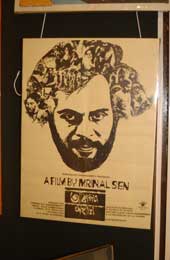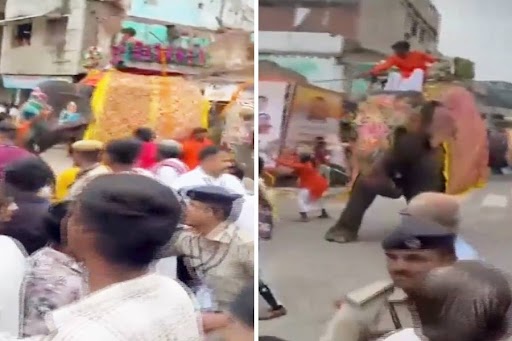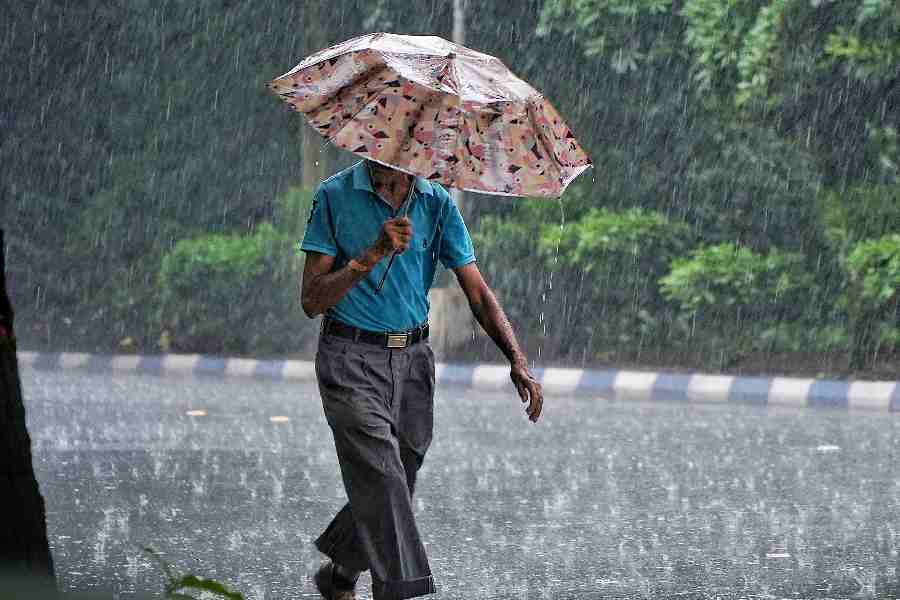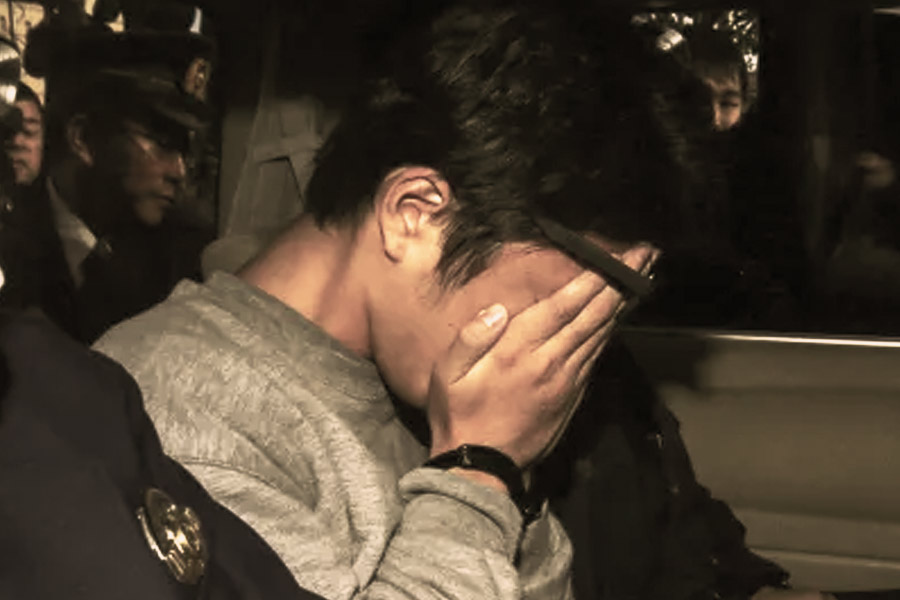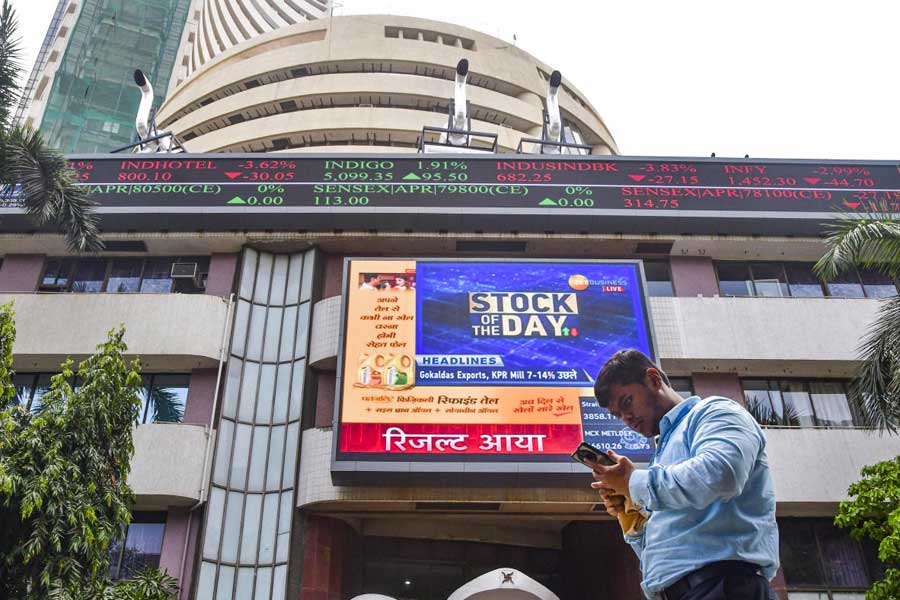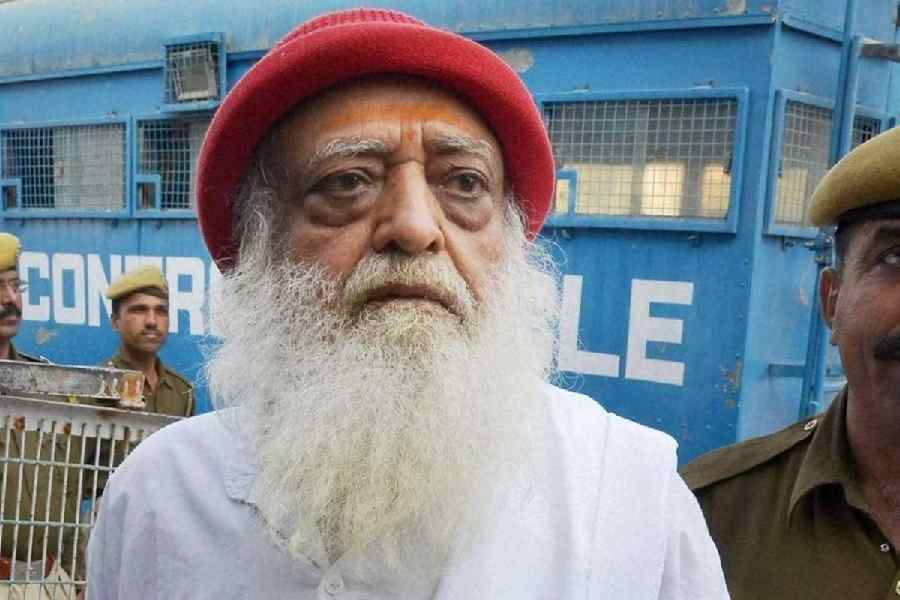 |
| Purnendu Pattrea’s black-and-white poster for Mrinal Sen’s Akaler Sandhane |
Long before the arrival of the TV, when the AIR, theatre and cinema were the only forms of entertainment available in any city, posters, besides ads in the print media, were the only means of promoting them. Every Wednesday evening or Thursday, men carrying a ladder and a lot of posters would go around a neighbourhood, plastering walls with the publicity material. These were also pasted on those rectangular boxes attached to lamp posts to announce the arrival the next day of a new release.
In the early days of Bengali cinema, artists would draw the image straight on the litho stone. The process continued till quite some time. Till as late as the early 60’s, Bengali posters used to be sent to Madras for printing. Satyajit Ray Archive and Nandan, in collaboration with Les Amis de la France and Alliance Francaise, Calcutta, have organised an exhibition of Bengali cinema posters at Nandan IV that harks back to its golden age.
The exhibition seems to have been put together in a hurry, and although there are significant exhibits, the posters, about 60 altogether, were selected arbitrarily without keeping any particular order in mind. So the posters of many significant films are missing, while those of many forgotten ones have been included. Of the heroines, Kananbala is totally non-existent. The exhibits also demand footnotes, which would have placed them in the proper context.
Nonetheless, viewers of a certain age are bound to be swept by a wave of nostalgia. That itself makes it a pleasurable experience. And since this is, perhaps, the first time that such an effort has been made, it would be churlish not to welcome it.
Of course Satyajit Ray is there. Sarbajaya with her two offspring within an alpana motif — both in English and Bengali. Abhijan features a colossal boulder. The cast of Jalsaghar includes musicians Salamat Khan, Akhtaribai Faizabadi, Roshan Kumari and Wahid Khan. There are two of Seemabadhdha — one shows the silhouette of an executive carrying a briefcase, along with the faces of the protagonists —one of them being the young and vivacious Sharmila Tagore. The hero peers through the title in the second. Both feature cabaret artiste Miss Shefali, who was the rage in the 70s. The fourth is Joy Baba Felunath with the child hero looking angelic.
There are at least two Tapan Sinha films — Jhinder Bandi with Uttam Kumar and Soumitra Chatterjee in the male leads. The other is Kshaniker Atithi with Ruma Guha Thakurata. Of the Mrinal Sens, the most innovative is Purnendu Pattrea's black-and-white design for Akaler Sandhane. The protagonists appear in a collage in the mop that Dhritiman Chatterjee wears. Paritosh Sen had designed the ones for Akash Kusum and Punascha but these are missing. The poster of the sole Buddhadeb Dasgupta film, Lal Daraja, is built around a painting of the same by Shubhaprasanna. Manash Kanya is, quite obviously, by O. C. Gangoly. His women were amazonian.
Besides these so-called “art” films, there are several posters of films which had enjoyed various degrees of commercial success. Of these, the most striking is that of Saheb Bibi Golam, with large playing cards and figures of musicians and staff of a zemindari. Uttam-Suchitra peer out of Annapurnar Mandir, Ekti Raat and Sagarika. One would have liked to see some more of these. But the posters of Rai Kamal (with Kaberi Bose), the comical Manik Jod, Raja Rammohun, Shubhada and Anthony Firingee compensate for it. The only one with a strong graphic quality is that of Adya Shakti Mahamaya.
Most of these came from the collection of Rakesh Sahni, an art dealer. He has collected the posters of about 600 films over the past six years. The archiving is over and now he is trying to identify the artists involved. He approaches distributors and sometimes they have to dig out the publicity material from godowns. In the early days, the entrepreneurs were mostly Bengalis. But after the 50’s they sold out to non-Bengalis, so it becomes difficult for Sahni to ascertain whose handiwork these posters are. Many were indeed executed by studios, which makes the work even more difficult. “I have tried to find out the artists but have reached a blank wall,” says Sahni. He also collects hand-painted lobby cards, which are a rare commodity. These used to be hung in the lobbies of important halls. Sahni has Mukti, Debdas (Pramathesh Barua) Ritwik Ghatak’s Ajantrik and other classics, too. But since it was rush job they had to be kept out of the exhibition.

